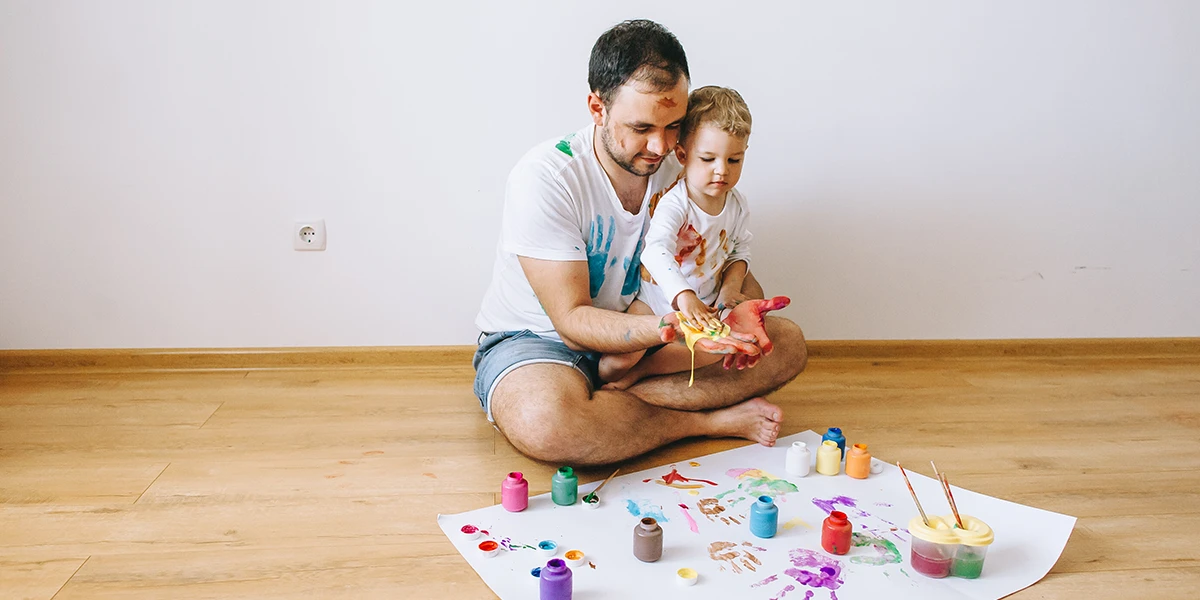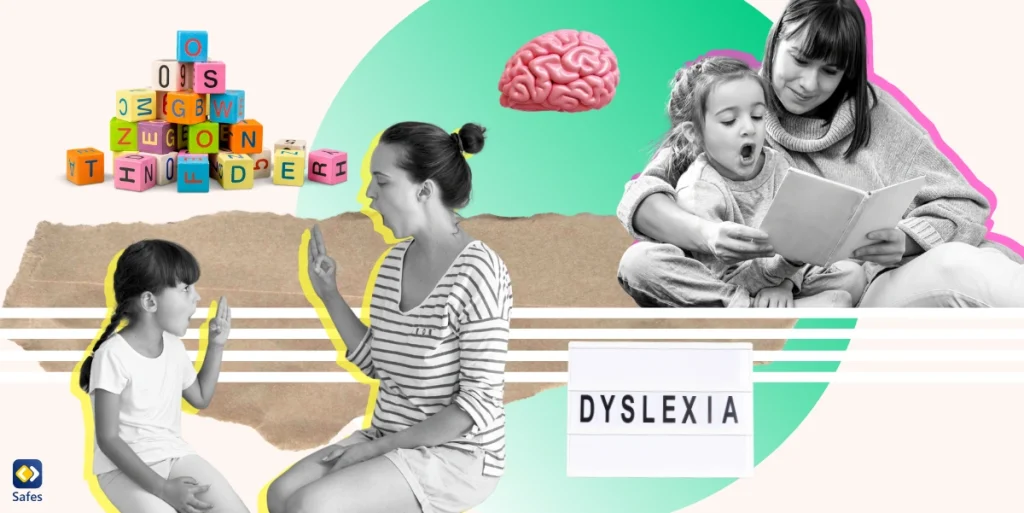Understanding why routines are important for children can help parents develop an effective schedule that works for their family. Routines provide consistency and structure for toddlers, which help them understand the world around them. Knowing what comes next gives toddlers a feeling of security and helps them understand the expectations of their environment. With routine, toddlers learn important skills related to self-regulation, such as how to take turns, share, or cope with frustration.
Download and Start Your Free Trial of the Safes Parental Control App
Overall, establishing a routine for toddlers can be beneficial for both parents and children. Fostering a routine for toddlers can help them develop healthy habits, learn important skills, and feel secure in their environment. For parents, routines can help them stay organized and have some free time.
Establishing a Daily Routine
We all know how important it is for adults to establish and maintain a daily routine. But did you know that it’s just as important for toddlers to do the same? Establishing a daily routine is key to helping toddlers learn, grow, and develop into the independent individuals they are meant to be.

Examples of a Typical Toddler Routine
So, what should a typical toddler routine look like? It’s important to include regular mealtimes, naps, and playtime. For example, a sample daily routine for a toddler might look something like this:
- 7:30 to 8:00: Wake up
- 8:00 to 9:00: Prepare and eat breakfast
- 9:00 to 10:00: Playtime
- 10:00 to 11:00: Outdoor time, exercise, etc.
- 11:00 to 12:00: Planned activity or errands
- 12:00 to 13:00: Making and eating lunch
- 13:00 to 15:00: Nap or quiet time
- 15:00 to 15:30: Afternoon snack
- 15:30 to 16:30: Free play
- 16:30 to 17:00: Dinner preparation
- 17:00 to 18:00: Family dinner and cleanup
- 18:00 to 19:00 Family time
- 19:00 to 19:30 Nighttime routine
- 19:30: Bedtime
During free play time, they can play with whatever they want to. You can think about electronic devices, books, or other toys. It remains important for a child to keep a good balance between screen time and non-screen time. Instead of prohibiting technology completely, you can think about using a parental control app. One of the best parental control apps is Safes. It offers many features to monitor your child’s internet use, like Web Filter to block certain websites, Application Blocking to block complete apps, or Detailed Activity Reports to manage their overall internet consumption. You can download the free app for Android, iOS, and Windows devices. Safes also offers a free trial, so you can explore all these features and see how they work for your family without any payment.
How to Create a Routine That Is Flexible yet Consistent
It’s important to remember that toddlers are still learning, growing, and developing, so it’s important to create a routine that is both flexible and consistent. For example, if your toddler is not ready to take a nap at the designated nap time, don’t force it. Instead, give them some quiet time or read them a book. However, it’s important to be consistent with mealtimes and bedtime. Try to stick to the same routine every day, even on the weekends. Little changes like this can help your toddler feel secure and give them a sense of predictability.
Benefits of Routines for Toddlers
Routines are an essential tool for parents raising toddlers. Establishing a routine can provide predictability, security, and emotional regulation for toddlers while also helping them to develop important life skills. Let’s take a look at the possible benefits of developing a routine for your toddler.
Predictability and Security
When toddlers understand what to expect from their day, they can begin to develop a sense of predictability and security. For example, having a regular naptime routine can help toddlers to understand when it’s time to wind down and prepare for their midday rest. This will lead to them being ready to rest and have quiet time at the same time every day.
Emotional Regulation and Life Skills
Routines also provide toddlers with emotional regulation. When toddlers know what to expect from their day, they can more easily manage their emotions. Additionally, routines can help toddlers to develop important life skills, such as time management and self-discipline. By creating a routine that includes tasks such as brushing teeth, getting dressed, and making the bed, toddlers can learn to take responsibility for their own actions and manage their time.
Reduce Stress and Anxiety
Finally, routines can help reduce stress and anxiety for both parents and children. When a routine is in place, parents have a plan of action that they can refer to in order to manage their time and the expectations of their toddlers. This also gives parents the clarity to divide and plan their spare time.

Tips for Implementing a Toddler Routine
Routines are essential for helping toddlers learn and grow. But getting a toddler to stick to a routine can be difficult. Here are some practical tips and strategies for implementing a toddler routine and handling common challenges.
- Get your toddler involved in the routine-setting process. Allow your toddler to help decide when activities will occur, which can help make the routine more enjoyable and engaging.
- Adjust the routine as needed. Toddlers’ needs and preferences can change quickly, so it’s important to be flexible and adjust the routine as needed.
- Make the routine fun. Incorporate activities that your toddler enjoys, such as games, crafts, stories, and songs.
- Be consistent. Stick to the routine as much as possible and provide consistent reminders when activities need to occur.
- Handle resistance. If your toddler resists the routine, provide additional support and understanding. Talk to your toddler about why the routine is important and what will happen if he or she follows it.
- Offer rewards. Positive reinforcement can help encourage your toddler to stick to the routine. Offer rewards for completing activities on time or for following the routine for a certain period of time.
It may take some time for your toddler to adjust to a routine, but with consistency and patience, you can help create a positive routine that your toddler will enjoy.
Creating a Bedtime Routine
As a parent, you know that establishing a regular and consistent bedtime routine for your toddler can help promote better sleep and healthier development. But what does a good bedtime routine look like? How can you create a calming and predictable routine that can help your toddler sleep better?
The Importance of a Bedtime Routine for Toddlers
Creating a consistent bedtime routine is important for toddlers because it helps them to understand what to expect and to begin to develop a healthy sleep schedule. A predictable routine can help them form positive sleep associations and can help them relax and wind down before bed. Additionally, bedtime routines can help children develop self-discipline and self-regulation since they learn to expect and follow through with the same activities every night. Also worth mentioning is that a proper bedtime routine can reduce bedwetting. This routine can also help to make the transition from day to night easier for both parents and toddlers.
How to Create a Calming Bedtime Routine That Can Help Toddlers Sleep Better
Creating a calming bedtime routine that can help toddlers sleep better involves consistency and predictability. Start by establishing a bedtime routine that is the same every night, such as bath time, story time, and lullabies. This will help your toddler to recognize what is expected and to develop a healthy sleep schedule. Additionally, create a calming atmosphere by dimming the lights and playing soft, soothing music. Finally, let your toddler know what to expect by using the same phrases or words each night. This will help them to understand that it’s time for bed and will help them to relax and drift off to sleep.

Adapting the Routine for Special Circumstances
In certain special circumstances, such as travel or illness, it can be difficult to stay true to the exact routine. In these cases, adapting the routine is necessary. Here are some tips to help toddlers adjust to the changes in routine:
- Be consistent: Even with a change in routine, it’s important to maintain consistency with other aspects of daily life. This can include a consistent routine for bedtime, mealtimes, and activities.
- Prepare ahead of time: If travel is involved, prepare toddlers in advance by talking about the changes in routine. Explain what to expect in a way that is age-appropriate and provide a sense of security by reassuring them that the normal routine will resume after the special circumstances conclude.
- Take breaks: During times of change, it’s important to build in breaks from the new routine. Allow toddlers to take breaks from activities or take a nap to help them recharge.
- Establish a routine: Even during times of change, it’s important to establish a routine as soon as possible. Create a schedule that you can handle, including activities, meals, and bedtime. This will help provide a sense of security for toddlers.
Adapting the routine for special circumstances can help toddlers adjust to changes in their daily life. By following these tips, you can help provide security and stability during times of change.
Conclusion
Routines are important for toddlers as they provide structure, stability, and comfort. By creating a routine for your child, you can help them to become more organized and independent. We hope that the tips and resources provided will help you to get started with implementing a routine for your toddler.
Resources for Further Reading and Support
Parents who are looking for more information or support can use the following resources:
- WebMD: This website offers helpful advice on how to create a routine for toddlers.
- Kids Health: This website provides information on kids of every age. They provide appropriate routines and checkups for all ages.
- Parents Magazine: This magazine offers advice on how to create a routine for toddlers, as well as tips for staying on track.
Your Child’s Online Safety Starts Here
Every parent today needs a solution to manage screen time and keep their child safe online.
Without the right tools, digital risks and excessive screen time can impact children's well-being. Safes helps parents set healthy boundaries, monitor activity, and protect kids from online dangers—all with an easy-to-use app.
Take control of your child’s digital world. Learn more about Safes or download the app to start your free trial today!




